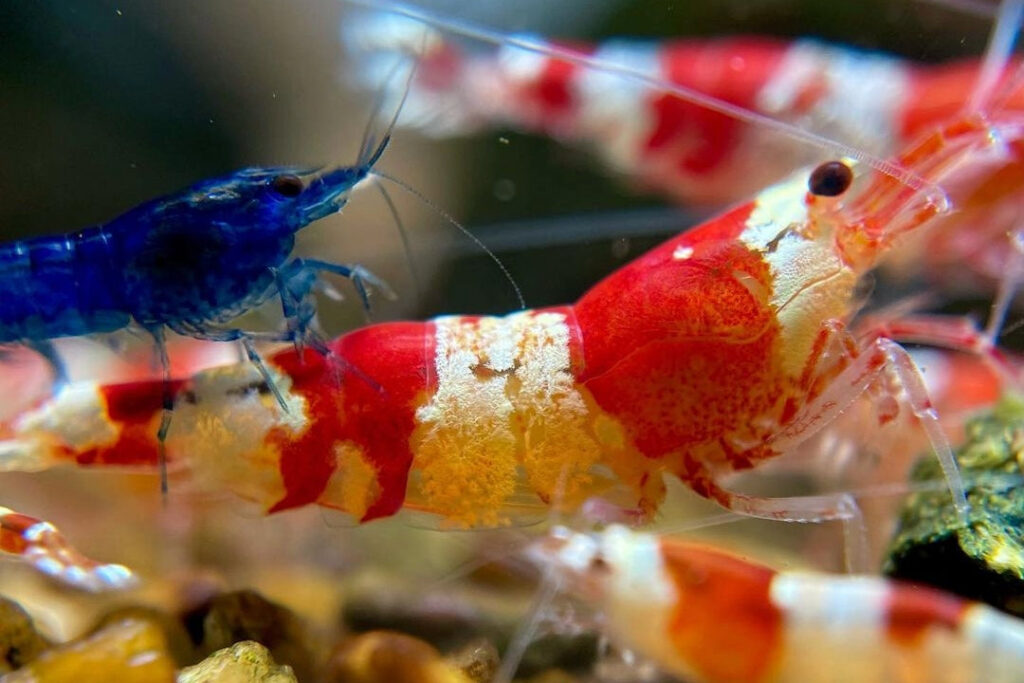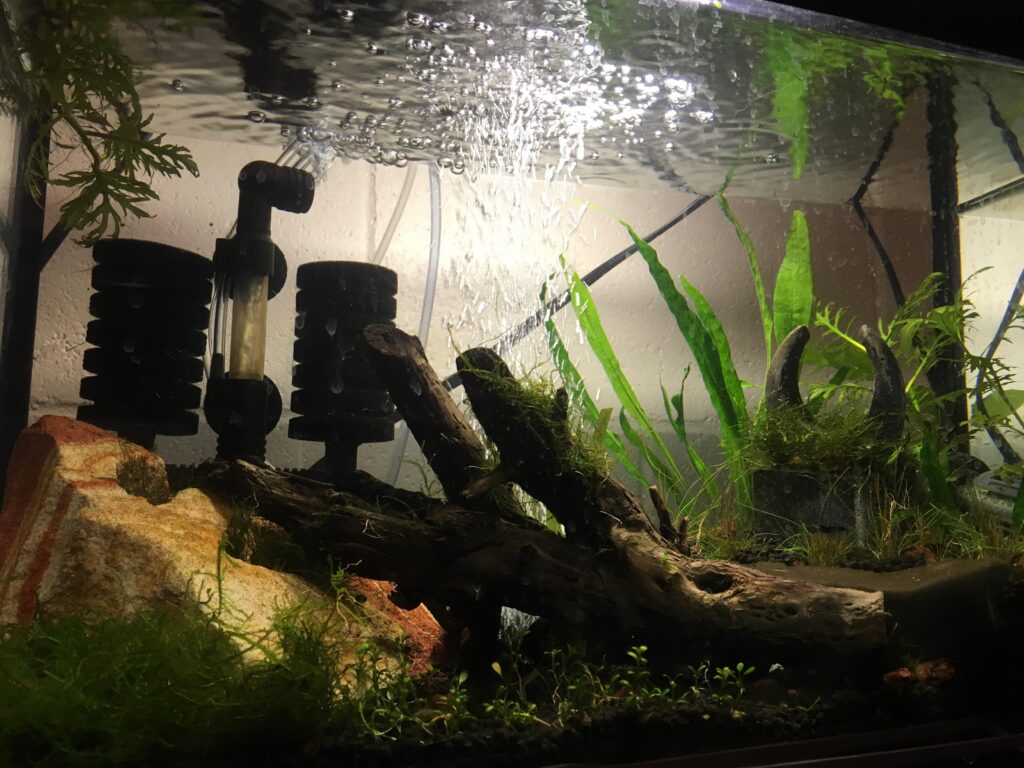When it comes to setting up a fish tank, one common question that arises is whether shrimp can survive in the same environment as fish. In this article, we will explore the compatibility of shrimp and fish, examine the ideal tank setup for shrimp, discuss key considerations for their survival, and provide tips for successfully keeping shrimp in a fish tank.

Understanding the Compatibility of Shrimp and Fish
In order to determine whether shrimp can survive in a fish tank, it is important to understand the biology and behavior of both shrimp and fish.
Shrimp are generally peaceful scavengers that help clean the tank and eat algae, while fish come in various species with different temperaments. Some fish may pose a threat to shrimp, either by preying on them or by being overly aggressive in their presence.
Factors such as tank size, water parameters, and the presence of suitable hiding places will greatly influence the success of housing shrimp and fish together. It is crucial to create an environment that meets the specific needs of both species.
Examining the Ideal Tank Setup for Shrimp

Tank Size and Shape
The size of the tank is an important consideration for the survival of shrimp.
Larger species like ghost, Amano, and bamboo shrimp require aquariums of 10 to 55 gallons, while smaller species like red cherry, crystal, and bee shrimp are better suited to tanks of 10 gallons or less.
The shape of the tank is also worth considering, as shrimp prefer tanks with a larger surface area rather than tall and narrow tanks.
Water Parameters
Shrimp are sensitive to water conditions, so maintaining proper water parameters is essential. They thrive in slightly acidic to neutral pH levels (6.5-7.5) and require stable water temperature, usually between 72°F and 82°F. Regular water testing and appropriate adjustments are necessary to ensure the well-being of both shrimp and fish.
Substrate and Decorations
Choosing the right substrate and providing adequate decorations can greatly enhance the shrimp’s survival rate.
Shrimp benefit from soft substrates like sand, as it allows them to burrow and forage for food.
Dense plantings, driftwood, and caves provide hiding places, which are crucial for shrimp to feel safe and secure.
Assessing the Compatibility of Shrimp with Different Fish Species

To increase the chances of survival for shrimp in a fish tank, it is important to select compatible tankmates. Some fish species are known to be peaceful and can coexist harmoniously with shrimp, while others may pose a risk to their well-being. Here are a few examples:
Peaceful Community Fish
Tetras, guppies, rasboras, and small catfish are generally considered peaceful community fish that can cohabitate successfully with shrimp. These fish species are less likely to pose a threat and can provide an interesting dynamic to the tank.
Aggressive or Predatory Fish
Species like cichlids, bettas, and larger predatory fish are not recommended tankmates for shrimp. These fish have a tendency to be aggressive towards smaller creatures and may view shrimp as a potential food source.

Key Considerations for Shrimp in a Fish Tank
When keeping shrimp in a fish tank, it is important to take into account their specific needs. Here are several key considerations:
Diet and Feeding Habits
Shrimp are omnivorous and require a balanced diet. They feed on algae, plant matter, and small organisms in the tank. Supplementing their diet with specialized shrimp pellets or flakes ensures they receive all the necessary nutrients.
Shelter and Hiding Places
Shrimp need hiding places to feel secure. Live plants, caves, and driftwood provide shelter and breeding grounds for shrimp. These features not only enhance their survival but also add visual interest to the aquarium.
Reproduction and Breeding Challenges
Shrimp have complex reproductive cycles and require specific conditions to successfully breed. Maintaining stable water parameters, providing appropriate hiding places for females to give birth, and ensuring adequate food sources for the newly hatched shrimplets are crucial for successful reproduction.
The process for replicating mother shrimp’s care to improve egg survival rates.

Creating an Optimal Environment for Shrimp
Ensuring the survival of shrimp in a fish tank involves creating and maintaining an optimal environment. Here are a few key factors:
Maintaining Water Quality
Regular water testing, partial water changes, and filtration are essential for maintaining high water quality. Shrimp are sensitive to ammonia, nitrites, and nitrates, so keeping these parameters in check is vital for their survival.
Providing Appropriate Food and Nutrition
In addition to their natural foraging, shrimp benefit from supplementary feedings. Offering a diverse diet including algae wafers, blanched vegetables, and mineral-rich supplements will support their overall health and vitality.
Ensuring Sufficient Space and Territory
Shrimp require sufficient space to move around without feeling cramped. Overstocking the tank with too many fish can lead to stress and territorial disputes. Pay attention to the recommended stocking levels for both shrimp and fish.

Benefits and Drawbacks of Having Shrimp in a Fish Tank
Keeping shrimp in a fish tank offers various benefits. They serve as natural algae eaters, help maintain the tank’s cleanliness, and add visual interest with their vibrant colors and unique behaviors. However, there are also potential challenges. Shrimp may become prey to certain fish species or may face difficulties in reproducing successfully.
Advanced Filtration Techniques for Shrimp Tanks
Effective filtration is paramount in shrimp-only tanks, particularly for species like Cherry Shrimp, Ghost Shrimp, and Crystal Shrimp. The choice of filter can make a significant difference in maintaining the delicate balance required for these sensitive creatures.
Sponge filters are often recommended for their gentle flow and safety for small shrimp. However, even more advanced aquarists might modify hang-on-back filters with pre-filter sponges to prevent shrimp, especially juveniles, from being sucked in.
These modifications are essential not only for Cherry and Crystal shrimp but also for Amano shrimp and Neocaridina shrimp, which are commonly kept in the same tank.
Ensuring that filters are properly maintained is crucial to handle common issues like shrimp molt and uneaten food, which if left unchecked, can deteriorate water quality in the tank.
Aquarium shrimp enthusiasts often opt for a shrimp-only tank to highlight the vivid colors and fascinating behaviors of species like Red Cherry Shrimp.

The Role of the Nitrogen Cycle in Shrimp Health
Understanding the nitrogen cycle is critical for shrimp health, impacting a wide range of shrimp species from feeder shrimp to more exotic types like Red Cherry and Crystal shrimp
Shrimp tanks, particularly those housing sensitive species, require a well-established nitrogen cycle to manage waste effectively.
This cycle helps break down harmful ammonia and nitrites from uneaten food and natural processes like shrimp molt into less harmful nitrates.
Maintaining this cycle is crucial, especially in tanks dedicated to a few shrimp or a single species, where the bioload is often minimal yet highly impactful.
Regular testing and management of the cycle are essential practices for anyone in the aquarium hobby, ensuring that their shrimp—whether in their own tank or a community setup—remain healthy and vibrant.
Freshwater shrimp, particularly Red Cherry Shrimp, thrive in well-maintained aquariums where their needs for clean and stable environments are met.
Keeping Red Cherry Shrimp in an aquarium shrimp-only tank allows for specialized care that enhances their health and breeding success in a freshwater setting.
Tips for Successfully Keeping Shrimp in a Fish Tank
To increase the chances of successful shrimp keeping in a fish tank, here are a few tips:
- Gradually acclimate the shrimp to the tank’s water conditions to minimize stress.
- Regularly monitor water parameters and maintain optimal conditions.
- Research and select compatible tankmates that won’t harm or stress the shrimp.
Conclusion
In conclusion, shrimp can indeed survive in a fish tank, provided that the tank setup meets their specific needs. From tank size and water parameters to suitable tankmates and appropriate nutrition, every aspect plays a crucial role in ensuring their well-being.
By creating an optimal environment and following the tips discussed in this article, you can successfully keep shrimp in a fish tank and enjoy their fascinating presence.


